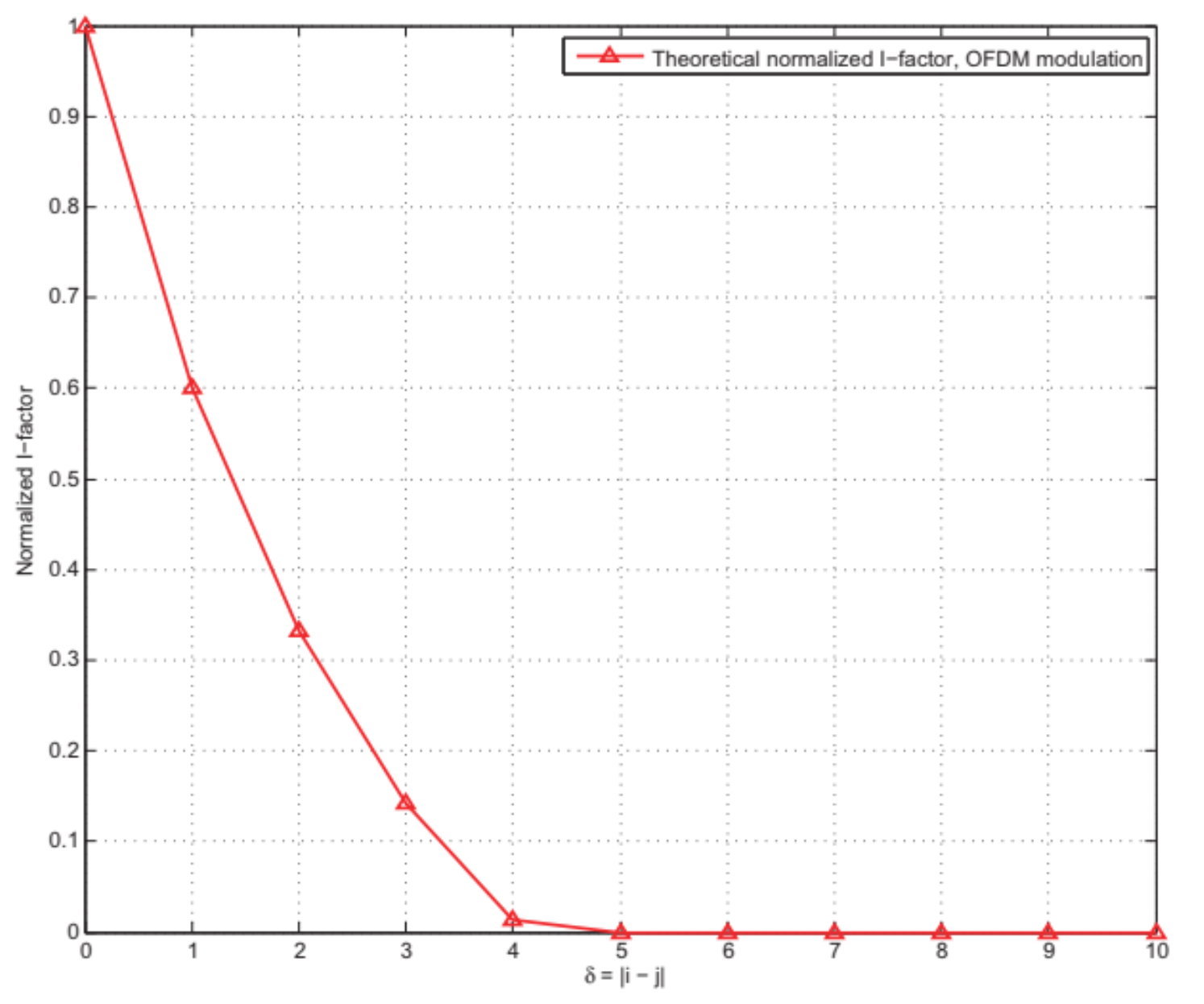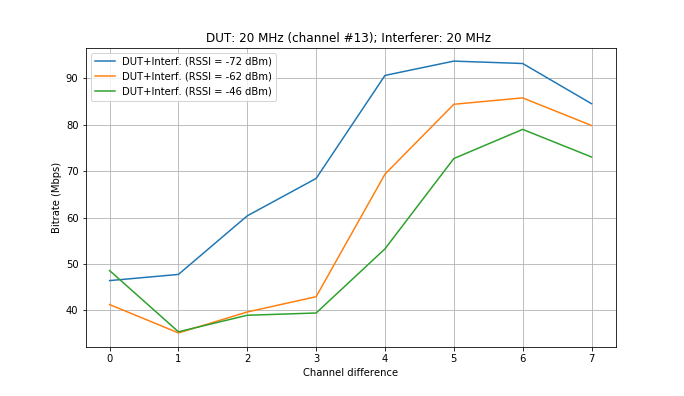Answer the question
In order to leave comments, you need to log in
Is CCI interference "better" than ACI (Wi-Fi)? And if so, how to formalize it?
The question is mostly scientific.
According to the approach described in [1] and other similar studies, the interference factor (IF - interference factor) between two IEEE 802.11n devices (Wi-Fi routers) can be obtained by calculating the overlap of OFDM signal spectral masks. In this case, the maximum IF will be when the devices share the same channel (CCI - co-channel Interference).
[UPD 21.03.22] That is, here is the spectral mask of the OFDM signal:

Fig. 1. Transmitted spectral masks of OFDM modulation used in 802.11 standards.[1]
IF is calculated using the following formula:

where i and j are channel numbers, tau = 5| i-j| [MHz] is the distance between the center frequencies of the channels, Si(f) and Sj(F) are the signal power distributions over the frequency spectra of channels i and j, respectively.
As a result, we get the following IF values:

Fig. 2. Normalized I-factor for OFDM signals.[1]
This is the physics of the process. BUT!
But the classic recommendation when planning Wi-Fi is to use multiple non-overlapping channels (eg 1, 6, 11) and therefore avoid ACI (adjascent channel interference). In addition, we know that CCI is not "pure" electromagnetic interference, there are special mechanisms such as NAV (network allocation vector) and CW (contention window) that affect resource sharing.
[UPD 03/21/22] Doesn't this mean that ACI with a small "distance" between channels is still worse than CCI?
Also, I did some measurements with two 802.11n routers communicating with their stations (with iperf, full airtime), and the case of CCI with good enough signal (RSSI) showed better results than ACI with a difference of one channel:

[UPD 21.03.22] Fig. Fig. 3. Median values of total speeds for three experiments with different RSSI [UPD 22.03.22] between Wi-Fi routers (ACI) (along the horizontal axis: the same |i - j| - difference between channel numbers).
I would appreciate if anyone knows and can share some relevant research about CCI IF!
Literature:
1. Mi, P. and Wang, X., 2012, June. Improved channel assignment for WLANs by exploiting partially overlapped channels with novel CIR-based user number estimation. In 2012 IEEE International Conference on Communications (ICC) (pp. 6591-6595). IEEE.
Answer the question
In order to leave comments, you need to log in
Nothing is clear about your research. Let's say you didn't miscalculate. You show a graph where the speed is higher when working on different non-overlapping channels than on the same one. This is logical and agrees with the recommendations of other researchers. So what is the question?
Didn't find what you were looking for?
Ask your questionAsk a Question
731 491 924 answers to any question